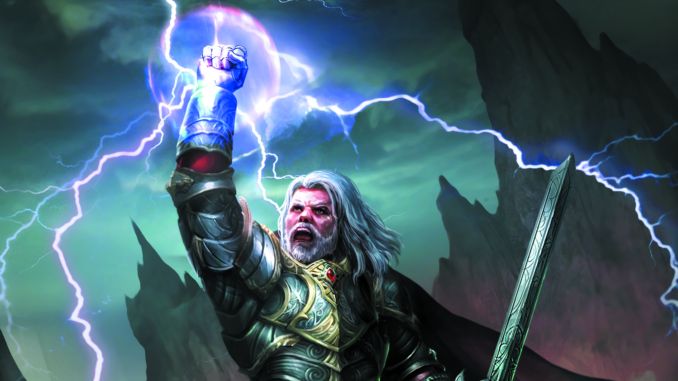Clerics are divine casters who gain their magical abilities from the deity whom they worship. They are men and women of the cloth and have a reputation for being the healers of parties. While this has been true, D&D 5e offers you many different ways of playing a cleric, with no adventuring party needing a healer to function.
Clerics start with proficiency with light armor, medium armor, shields, simple weapons, and Wisdom and Charisma saving throws. Some subclasses grant you proficiency with martial weapons and/or heavy armor.
If you pick one of these subclasses, or if you gain proficiency from somewhere else, you can start with a warhammer and chain mail.
You also start the game with a holy symbol. This is a symbol of your deity that could be engraved on your shield, an amulet you wear, or a reliquary you carry.
Some cleric abilities require you to ‘present your holy symbol’, reminiscent of a vampire hunter brandishing a crucifix. This holy symbol can also act as your spellcasting focus. Let’s start our Clerics 5e Guide by looking at his abilities.
Abilities
Spellcasting (1st level)
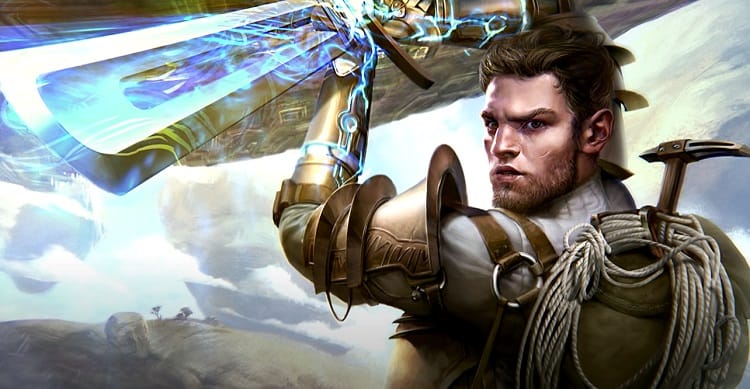
At 1st level, your deity grants you the ability to cast cleric spells. Clerics are full spellcasters, preparing up to 9th level spells. The cleric spell list includes many offensive options but is known for having all of the best healing spells in the game from Cure Wounds to Mass Heal.
Your spellcasting ability as a cleric is Wisdom, which represents your spirit and connection to your deity, and you are able to prepare a new list of spells every day, granting you a great amount of versatility as a spellcaster. This makes recon missions a great boon to you. If you know what’s to come, you can prepare accordingly.
Clerics are also ritual casters. If you cast a spell with the tag ‘ritual’, you can spend an extra ten minutes to cast it and it does not expend a spell slot. You must have the spell prepared in order to cast it.
Channel Divinity (2nd level)
At 2nd level, you gain the ability to act as a conduit between the divine and the mundane to produce a magical effect. This functions for the cleric as a separate resource to spell slots that allow you to use specific abilities. Every cleric can use their Channel Divinity to turn undead. Other Channel Divinity uses come from your cleric subclass.
Turn Undead / Destroy Undead (2nd/5th level)
Using Channel Divinity, you can turn every undead creature within 30 feet of you. Turning a creature means all it can do is dash away from you. This effect ends after one minute or if the undead takes damage.
In combat, you can use this to send all the undead creatures away from you, giving you a chance to escape, deal with any living enemies, or cast large area spells making it difficult for them to return.
When you use this ability at 5th level and beyond, undead creatures of low challenge rating aren’t turned. Instead, they are instantly destroyed if they fail the saving throw. If there is a mix of undead enemies, you can turn some creatures and destroy others.
Divine Intervention (10th/20th level)
At 10th level, you can call on your deity to help you. In order for your deity to answer, you need to roll your level or below on percentile dice, giving you a 10% chance of working up to 19% chance of working at level 19.
This is your party’s hail mary option until you reach 20th level, at which you automatically succeed and your deity always answers you. Being able to have a god on speed dial is incredible but you can only use it once every 7 days.
Optional Abilities (TCoE)
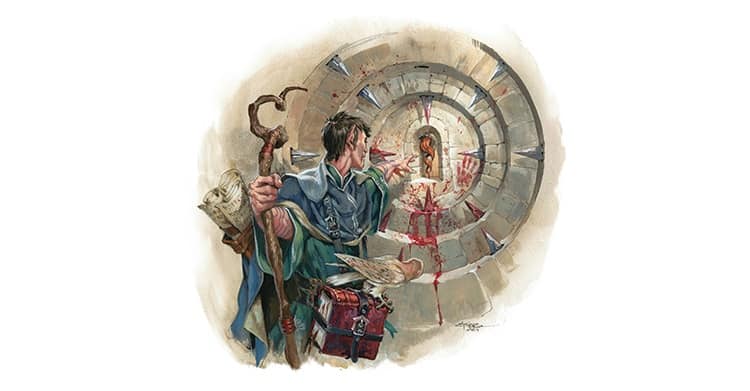
Tasha’s Cauldron of Everything published optional class features for every class. Since these features are optional, you’ll need to check with your DM if you can use them.
Additional Cleric Spells
You get access to some aura effects, which will be more useful for frontline clerics masquerading as paladins. You also finally get access to Power Word Heal, which was previously only a bard spell.
Harness Divine Power
Does your domain have a terrible Channel Divinity option? Use this resource to regain a spell slot instead.
Cantrip Versatility
Like most classes, this gives you the option of swapping out cantrips when you become level 4, 8, 12, 16, and 19. If you picked a cantrip you thought would be useful but wasn’t, you’re not stuck with it forever.
Blessed Strikes
This feature replaces the 8th level feature of your domain: either Potent Spellcasting or Divine Strikes. Instead of empowering either your cantrips or weapon attacks, both are empowered with an additional 1d8 radiant damage.
This feature is a great option for almost all subclasses. Consider using this if the damage type of your Divine Strike is fire, poison, or another heavily resisted damage type. Notably, Divine Strikes only work on your turn whereas Blessed Strikes always work including during opportunity attacks.
Subclasses
The cleric subclasses, known as Divine Domains, are closely tied to the role that each cleric plays in the game and the adventuring party. Your Divine Domain represents the power of the deity whom you serve. This begins at level 1 for every cleric. Clerics gain more subclass abilities at 2nd, 6th, 8th, and 17th levels.
This also makes clerics an interesting multiclass option as taking only one or two levels in cleric can make for very interesting combinations with other classes.
Unless you’re able to use the optional feature Blessed Strikes, the 8th level ability for all clerics is one of two options: Potent Spellcasting or Divine Strike.
Potent Spellcasting lets you add your Wisdom modifier to your cleric cantrips while Divine Strikes add 1d8 to your weapon attacks, making either cantrips or weapon attacks the default attack option for your subclass.
Knowledge Domain
Dedicated to a god of knowledge, knowledge clerics are lore keepers, academics, and secret hoarders. Clerics of this domain are capable of dipping into a universal wellspring of information and harnessing that power for themselves. As a knowledge cleric, you are a great utility caster and divination expert.
Knowledge domain spells include many divination options from low-level options like Identify to potential game-breaking options like Legend Lore.
At 1st level, you learn two extra languages and gain expertise in two skills. Your Channel Divinity option at 2nd level allows you to become proficient in one skill or tool of your choice for ten minutes as you tap into a divine well of knowledge.
At 6th level, you can read a creature’s thoughts and then plant an idea in their mind like you’re in Inception. Lastly, you can uncover the DM’s plot for the whole campaign by standing in a room and knowing what’s happened in there for the last 20 days.
Play this domain if you want to add some great utility options to your party and have a solution for many out-of-combat options. Play a librarian, a lore keeper from an ancient order, or a nerd.
Life Domain
The life cleric is what most people think of when you tell people you’re playing a cleric. This domain is the ultimate healer in D&D. Gods of life seek to heal the sick, expunge the forces of death and undeath.
Unsurprisingly, this domain gains most of the best healing spells. Notably missing is Healing Word, which allows you to heal from afar, but never having to worry about preparing Revivify can be incredibly useful.
At 1st level, you gain proficiency with heavy armor, making this domain a highly defensive option. You also become more effective at healing, gaining a bonus to your healing spells. Your Channel Divinity option gives you access to another healing option.
The great thing about this option is that you can divide it among multiple creatures, potentially saving many lives in one turn. At 6th level, whenever you cast a healing spell, you heal yourself as well.
Lastly, at 17th level, your healing spells always heal for the maximum for the roll. This is great but unfortunately, higher-level healing spells like Heal don’t require any dice roll anyway.
Play this class if you want to defend and heal your allies. As with every subclass, you’ll still be able to do great damage when you want to. Don’t play this class if you feel like you have to because no one else is playing a cleric. 5th edition doesn’t require someone to be the healer.
Light Domain

Harness the power of fire, lens flares, and the sun itself to blind, distract, or otherwise disable enemies and control the battlefield. Light is representative of truth, beauty, and renewal and, as a cleric of this domain, you can stylize how you lean into the radiance.
Light domain spells include many fire-based damaging spells such as scorching ray and fireball, giving this domain one of the highest damage outputs. However, Faerie Fire and Wall of Fire also emphasize this domain’s ability to control the battlefield.
At 1st level, you gain the light cantrip and the ability to flash a light in an enemy’s eyes when they attack you, imposing a disadvantage. Your Channel Divinity option lets you dispel Magical Darkness while simultaneously dealing radiant damage to enemies.
At 6th level, you can flashlight into the eyes of enemies near you when they attack your allies. Lastly, you can release an aura of light, rendering enemies around you vulnerable to fire and radiant spells.
Many of this domain’s abilities involved imposing a disadvantage to allies’ attacks. While it is a shame that you don’t actually blind your enemies, you have a great deal of control over the whole battlefield.
Nature Domain
If you like how druids and rangers are themed around knowing the natural elements intimately but don’t want to play those classes, the nature domain allows you to tap into the same thing. Unfortunately, a few of the abilities are situational and might not see much use at all. This subclass isn’t horrible, but
Nature domain spells include some area effects such as Spike Growth and Plant Growth (the latter creates extra difficult terrain), and charm effects limited to beasts. While there are some interesting options like Tree Stride, many of these spells will go unused.
At 1st level, you gain proficiency with heavy armor, a druid cantrip, and a bonus skill. Pick up shillelagh and wield safely wade into the frontline thwacking people with a big stick.
Your Channel Divinity option lets you charm the beasts and plants around you for one minute. While this fits the theme, you might never need to use it and it only works on those two creature types.
At 6th level, you can halve elemental damage on yourself or an ally every turn. Your divine strikes deal your choice of cold, fire, or lightning damage, giving you great versatility. Lastly, you can command the beasts and plants that you have charmed.
Since this charm only lasts one minute, it turns the situational Channel Divinity into a more situational capstone feature of the class.
Tempest Domain
Tempest clerics worship gods of storms, skies, and seas. This domain is the subclass if you want to play Thor. As a tempest cleric, you are known for your damage output and you have a clear role on the frontline of the battlefield.
Tempest domain spells include many thunder and lightning damage spells, which are all great for your Channel Divinity option and Thunderbolt Strike.
At 1st level, you gain proficiency with martial weapons and heavy armor, and the ability to explode with lightning or thunder when someone hits you. These abilities firmly suggest you should be in the middle of battle.
Your Channel Divinity option lets you deal maximum damage when you roll lightning or thunder damage. At 6th level, you can knock enemies back when dealing thunder or lightning damage. Lastly, you effectively become a storm and gain flight when you are outdoors.
This is a very fun domain to play. Your armor keeps you in battle longer, leaving you to focus on dealing as much damage to those around you as you can manage.
Trickery Domain
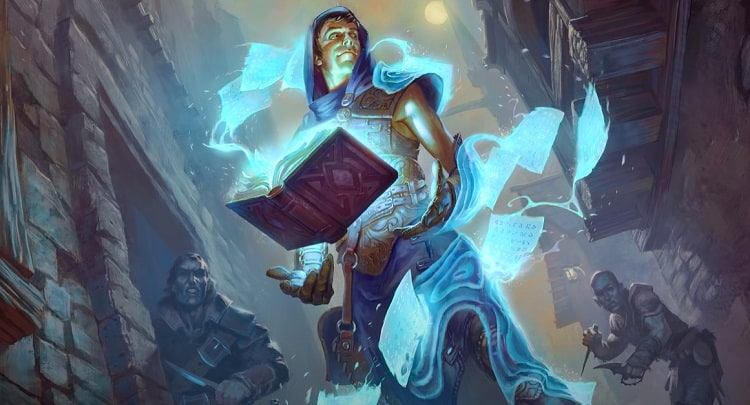
While the tempest cleric is dedicated to Thor, the trickery cleric is dedicated to Loki or another god of mischief. This domain relies on illusions, deception, and trickery and can therefore be harder to play than a domain that simply deals damage. If played right, this domain is a very powerful option for the adventuring party.
Trickery domain spells include deceptive and shape-changing abilities like Disguise Self and Polymorph, strong utility options like Pass Without Trace and Dimension Door, and powerfully deceptive options like Charm Person and Modify Memory.
At 1st level, you can give an ally or yourself advantage on Dexterity (Stealth) checks for an hour. This could make your rogue even sneakier or cancel out disadvantage on your heavily armored paladin or fighter for group stealth checks.
Your Channel Divinity option lets you create an illusion of yourself for one minute and cast spells from their location. Since the illusion is invulnerable to all damage and weapons pass through it, Send it into battle instead of risking your own skin.
At 6th level, you can use your Channel Divinity to become invisible for a turn. Your divine strikes deal poison damage, which is heavily resisted so blessed strikes are a better option. Lastly, when you create an illusion of yourself, you can create four illusions, allowing you to be in five places at once and cast spells from any of them.
War Domain
The church of a war cleric is the battlefield, their worship acts of violence. In service to a god of war, your place is on the frontline dealing damage with your strikes and enabling your allies to fight alongside you.
War domain spells include many of the best damage spells for clerics: Spiritual Weapon and Spirit Guardians are notable examples.
At 1st level, you gain proficiency with martial weapons and heavy armor. This is a necessity to be the warrior your deity wants you to be. You can also make a limited number of attacks as bonus actions. Your bonus action is much better used to swing a Spiritual Weapon.
Two Channel Divinity options give you and then others a +10 to hit on an attack roll. Use on Inflict Wounds, a rogue’s sneak attack, or when you really need to hit something.
Your Divine Strikes deal the same damage type as your weapon and, lastly at 17th level, you gain resistance to bludgeoning, piercing, and slashing damage from non-magical weapons.
Death Domain (DMG)
The death domain was published as an example of an evil subclass for dungeon masters to use to craft villains. However, if your DM allows it, you can play as a death domain cleric.
At 1st level, you gain proficiency with martial weapons. Unfortunately, you don’t gain heavy armor proficiency to increase your durability. Additionally, you can target two creatures with a necromancy cantrip instead of two. Toll the Dead is the single highest damaging cantrip and you can cast it at two adjacent enemies.
Your Channel Divinity option adds a small damage boost once when you hit with a melee attack. At 6th level, you ignore resistance to necrotic damage when dealing it. Your divine strikes unsurprisingly deal necrotic damage.
Lastly, you can target two creatures with necromancy spells up to 5th level. It might be tricky to use since many of these spells are melee but being able to bestow multiple curses or cast vampiric touch on multiple creatures is powerful.
Forge Domain (XGtE)

Clerics dedicated to a god of the forge learn how to harness the divine power of the forge to craft and imbue magic in items using fire and metal.
At 1st level, you gain proficiency with heavy and smith’s tools, firmly placing you on the frontline. Also at 1st level, you can imbue a piece of armor or a weapon with magic. These are both very powerful options to have at 1st level.
Your Channel Divinity option allows you to create anything worth 100gp or less. You’ll need to get creative with what item might help you in a given situation.
At 6th level, you gain resistance to fire damage and a +1 to your AC, as you master the power of the forge. Your divine strikes deal fire damage, which is heavily resisted, so blessed strikes are probably a better option for you.
Lastly, the war cleric may gain resistance to bludgeoning, slashing, and piercing damage from non-magical weapons but you also become immune to fire damage as well.
Grave Domain (XGtE)
Grave clerics are arbiters of the balance between life and death. If you want to play a grim reaper, this subclass is a better option than the death domain as you have a powerful hand in who lives and who dies.
Grave domain spells include the best spells for bringing creatures back from the dead like Revivify and Raise Dead and spells that prevent death like False Life and Death Ward.
At 1st level, when you cast a healing spell on a creature who has 0 hit points, you heal them for the maximum amount. If someone’s on 1 hit point, it might even be worth letting them fall unconscious before healing them.
You learn Spare the Dying and can cast it at range and as a bonus action. You also can also detect undead within 60 feet of you, which you probably won’t use very often.
Your Channel Divinity option allows you to make a creature vulnerable to one attack, allowing someone to deal double damage. At 6th level, you gain the tide-turning ability to turn critical hits on yourself or an ally into normal hits.
Lastly, at 17th level, you and your allies begin to soak up the fleeting life force from enemies you kill. It might not be a lot of healing but it always happens without having to use your reaction.
Arcana Domain (SCAG)
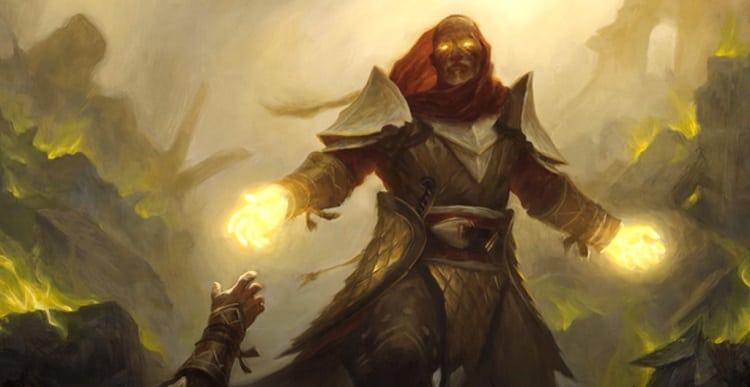
Arcana clerics worship a god of magic. This subclass makes the cleric more like a wizard, leaning into the arcane rather than the divine. While the Channel Divinity option is weak, this can be a very fun option that blends the cleric and wizard together.
Arcana domain spells include options to detect, dispel and imbue magic, divination options, and methods for hiding from divination magic.
At 1st level, you gain proficiency in the Arcana skill and two additional cantrips. Your Channel Divinity option lets you use the Turn Undead function on one celestial, elemental, fey, or fiend, which is very limiting. Compare this to the Oath of Watchers paladin who can turn any aberration, celestial, elemental, fey, or fiend within 30 feet.
At 5th level, your Channel Divinity allows you to banish the creature if it is a low enough challenge rating. However, you’re better off most of the time to kill it with a cantrip. At 6th level, you can remove a spell from someone when you heal them. If you expect to encounter many enemy spellcasters, this can be a great option.
Lastly, at 17th level, you add four spells to your spell list from the wizard spell list. One 6th level, one 7th level, one 8th level, and one 9th level. Wish spell, by its own admission, is the most powerful spell in the game and allows you to duplicate any spell of 8th level or lower or anything else you can think of.
You could also make a backup of yourself using Clone, ride an invulnerable Illusory Dragon, and send your enemies into the sky using Reverse Gravity. There’s a lot you can do with this feature and you can make a truly unique character.
Order Domain (TCoE)
Clerics of the order domain believe that laws of the universe and of society are to be obeyed and it is through the power of order that divinity can be found. The order domain cleric is a great option to lead your party into battle, command allies, and compel enemies to bend to the word of law.
Order domain spells include many enchantment options designed to let you compel people to do what you say and follow your orders. Those who disagree can find themselves the target of Slow or Dominate Person.
At 1st level, you gain proficiency with heavy armor and either Intimidation and Persuasion. Also, when you cast a spell on an ally, they can immediately attack someone next to them. Heal or buff your party and watch them immediately go to work.
Your Channel Divinity option allows you to charm any creatures within 30 feet of you and make them drop their weapons. Use this so that your allies can reposition or escape without suffering opportunity attacks.
At 6th level, you can cast enchantment spells as a bonus action. Your divine strikes deal psychic damage which is very rarely resisted. Lastly, at 17th level, when you deal your divine strike damage, an ally can deal additional psychic damage when they hit them.
The last ability is both underwhelming and boring. Additional damage is fine but a capstone enchantment ability would have been cooler.
Peace Domain (TCoE)
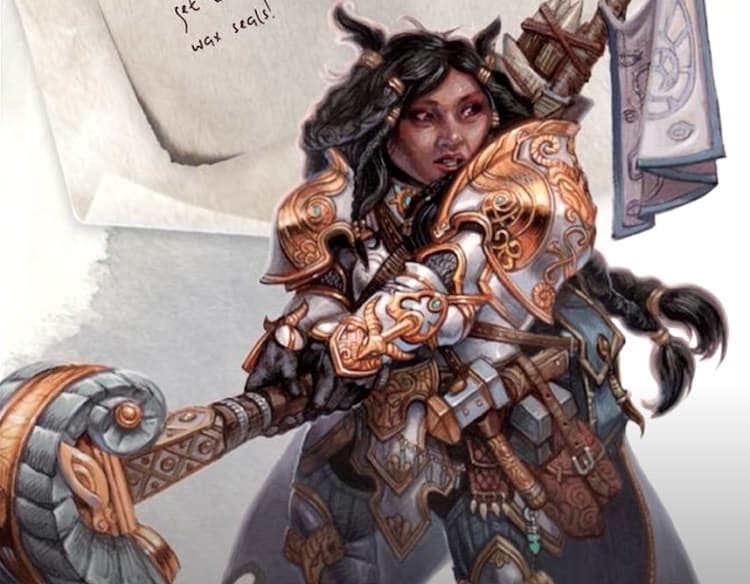
The peace domain cleric is the character who keeps telling their enemies “I really don’t want to do this.” Clerics of this order believe in the resolution of conflict, the prevention of destruction, and standing up for those who would seek to wage war.
This is an extremely powerful subclass that is even banned at some tables.
Peace domain spells include many great buff spells such as Heroism and Aid, and interesting options like Resilient Sphere, which allows you to get rid of the boss, kill all their minions, and then bring them back in time for a swift death.
At 1st level, you gain proficiency in either Insight, Persuasion, or Performance. You can also forge two members of your party into a peaceful bond, giving them 1d4 to every d20 roll for 10 minutes when within 30 feet of each other.
Apply additional buffs like Bless onto this and these party members will always hit. This ability also scales with proficiency so a 1 level multiclass dip into this still gains the full benefits of it.
Your Channel Divinity option allows you to run around the battlefield healing everyone you run past. At 6th level, the creatures in your bond can teleport to each other to take damage instead of the other. Lastly, at 17th level, the bond extends to 60 feet and if someone teleports to take the damage, they are resistant to that damage.
Twilight Domain (TCoE)
While grave clerics oversee the balance between life and death, twilight clerics oversee the balance between light and darkness. Clerics of this order guard against the horrors of the darkness and instead transform darkness into comfort and a home.
This subclass is banned at some tables because the range of darkvision is too big and the Channel Divinity option makes your entire party almost impossible to hurt.
At 1st level, you gain proficiency with heavy armor and martial weapons. You can grant a creature advantage on initiative rolls. You also gain darkvision to a range of 300 feet, which you are able to share with others for an hour at a time.
Your Channel Divinity option creates an aura of dim light around you with a radius of 30 feet for 1 minute. When in this aura (which they will be because it’s massive), your party members gain temporary hit points every turn and can’t be charmed or frightened.
At 6th level, you can fly for one minute three times a day. Your divine strikes deal radiant damage. Lastly, at 17th level, your entire party gains half cover while in your twilight aura. This means that all of your allies have a +2 to AC and Dexterity saving throws.
Race Options

If you’re not using the Customized Origin feature from TCoE, prioritize races with Wisdom score increases.
Races with +2 to Wisdom:
- Firbolg. You also get some innate magic abilities.
- Kalashtar. You also get advantage on Wisdom saving throws and resistance to psychic damage.
- Wildhunt Shifter. You also gain advantage on Wisdom checks and proficiency in Survival.
- Githzerai. You also get an invisible Mage Hand, innate spells, and advantage on saving throws against being charmed or frightened.
- Lineages. A cleric of dhampir, hexblood, or reborn lineage makes for a story-rich character with unique abilities.
If you are using the Customized Origin feature, the best races for a cleric are ones that give you complementary abilities. Consider an aarakocra, winged tiefling, or protector Aasimar for flight. Custom lineage and variant human gives you access to a feat at first level.
F.A.Q.
Question: Are Clerics Good?
Answer: Clerics are a powerful and versatile class. Instead of simply being the dedicated healer, there is a cleric subclass to cover most party roles.
Question: Do Clerics Get Cantrips?
Answer: Yes, clerics start with 3 cantrips and gain more as they level up.
Question: What is a Cleric Domain?
Answer: Domains are the name for cleric subclasses and are determined by the deity whom the cleric serves. The term ‘domain’ refers to the reach of the deity’s power. For example, a god of the sea has power over the forces of the seas and that place in the world is considered their domain.
Question: Do Clerics Need a God?
Answer: While a typical cleric is a servant of a particular god, some clerics serve a pantheon, philosophy, or cosmic force (XGtE pg 18).
Question: What Gods do Clerics Worship?
Answer: Clerics serve gods with power over the divine domain that they’ve chosen. To determine the identity of the god you serve, talk to your DM about what gods exist in the world to find one that’s suitable for you.
Question: Can Clerics have two Domains?
Answer: No. When you choose a divine domain, that is your cleric subclass. You can only have one subclass for a given class.
Summary
Clerics are those in dedication to a particular deity, from whom they gain many divine powers. Clerics in D&D 5e can fill almost any party role and largely depend on the nature of the deity whom they serve. As full spellcasters, they have access to unique healing and resurrection options.
However, you don’t need to play a cleric simply so that your party has a healer. Bards, druids, paladins, and rangers all have healing options. Or just go into town and stock up on healing potions.
- Armor of Agathys 5e Guide: What is Armor of Agathys? - August 3, 2022
- Oath of the Ancients 5e Guide - August 3, 2022
- Dissonant Whispers 5e Guide - July 20, 2022


